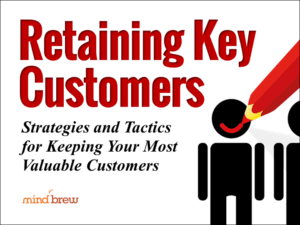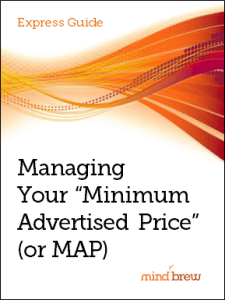Lately, I’ve been hearing the terms “revenue management” and “pricing” being used interchangeably in B2B, as though they’re referring to the same thing. I must admit, this has surprised me a bit because I’ve personally never viewed them as being synonymous. They’re related, of course. But I’ve always seen them as being different.
So as I often do, I began to wonder if I might be wrong. And since being ignorant about something I really should know makes me incredibly uncomfortable, I decided to bring some clarity to the issue by interviewing someone who lives and breathes revenue management.
Amit Aggarwal is the Executive Vice President of Revenue Management at iHeartMedia (formerly known as ClearChannel). Before that, he did revenue management at Starwood Hotels and Resorts. And before that, he did revenue management at Priceline.com.
In other words, Amit really knows his stuff.
And after spending an hour discussing the differences between revenue management and pricing with Amit, I feel much better. Yes, my understanding of revenue management was somewhat outdated. But I wasn’t wrong about revenue management and pricing being different in a number of ways. Let’s touch on a few of the biggies…
Revenue management functions tend to be much more concerned about inventory allocation, movement, and mix than a typical B2B pricing function. In Amit’s view, revenue management is actually 50% pricing and 50% inventory management:
“I view revenue management as the super set. What I mean by that is, pricing is one side of the coin, with the other being inventory management. Together, they make up what I consider to be revenue management.”
Why does inventory play such a huge role in revenue management?
You’ll usually find revenue management being practiced in industries where unsold inventory quite literally disappears, never to return again—i.e. advertising space, hotel room days, car rental days, and so on. For example, if you don’t rent that hotel room today, the opportunity is gone tomorrow and you’ll never get it back. Or as another example, if you don’t sell that airline seat by the time the plane pushes back from the gate, you never will.
For a typical B2B pricing function, inventory isn’t usually a primary consideration. It’s important, of course, but it doesn’t often comprise 50% of the job. When you’re dealing with hard goods, additional inventory is almost always available, and the inventory that isn’t sold today will still be on the shelf tomorrow.
Just imagine how different your job would have to be if the widgets you didn’t sell today evaporated into thin air overnight!
Another important difference to recognize is that revenue management functions can focus on maximizing and optimizing revenue (hence the name). They can do this because most of their costs are fixed or sunk, and the marginal cost of the next sale is negligible.
In sharp contrast, typical B2B pricing functions aren’t dealing with anything even close to 95%+ contribution margins. In these situations, the prices and actions required to maximize revenue are very different from those required to maximize profit. And as such, for a typical B2B pricing function to focus on revenue would be tantamount to malpractice.
Now, these are just some of the differences. And when you listen to the complete interview with Amit, you’ll no doubt recognize many more. The point here is that pricing and revenue management are not simply different words describing the same practice. And frankly, pricing is confusing enough already…and conflating our terms just makes the situation worse.
PS: I hope I haven’t given the impression that I’m one of those people who always has to be right. I can assure you that on the odd chance that I’m ever wrong at some point in the distance future, I will accept it with grace, humility, and only a slight touch of skepticism. 🙂














